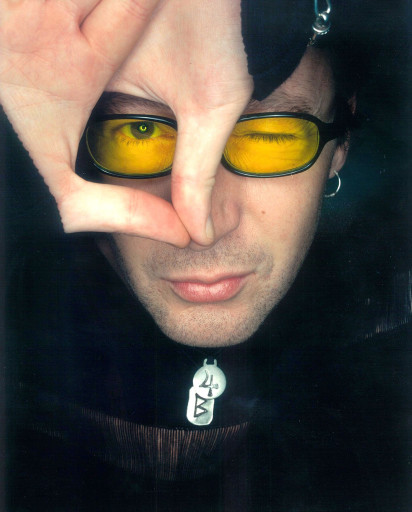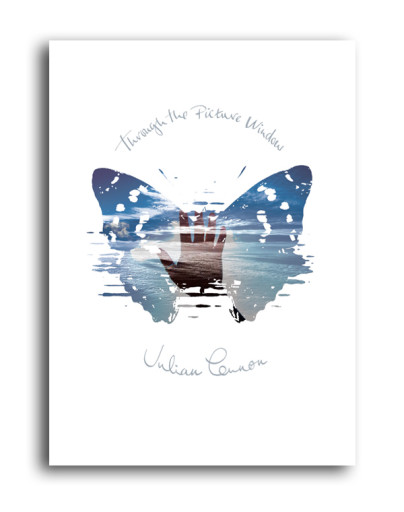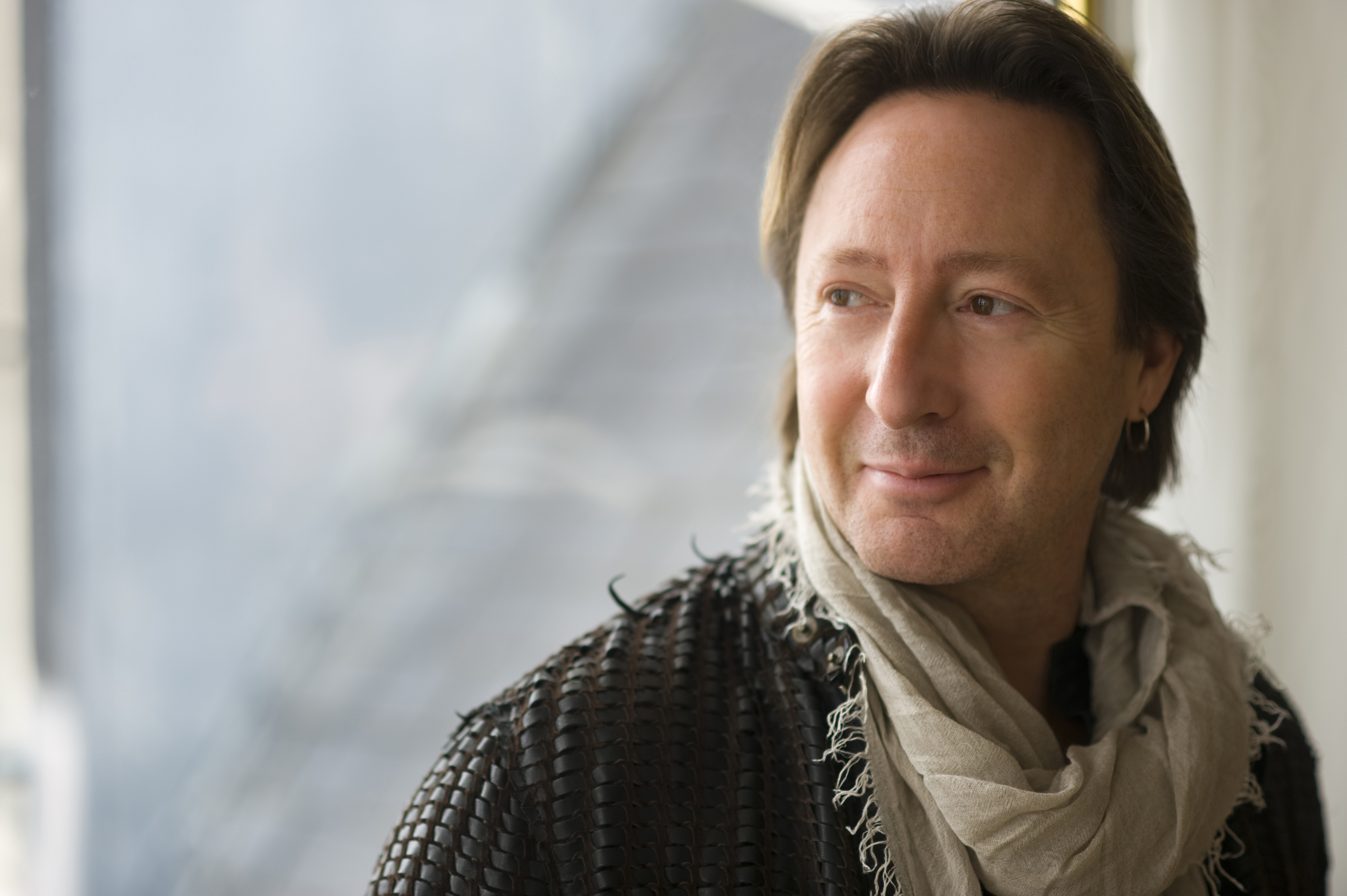 Julian Lennon is known for his music — his excellent new studio album — and first since 1998 — ‘Everything Changes,’ is out now, along with a newly issued DVD documentary, video and acoustic tracks package called ‘Through The Picture Window’ — but many people do not know that he is also a burgeoning photographer with a growing portfolio. He has shot many striking landscape and portrait images, and he recently began a new side career as a set photographer working on a film where people did not knew who he was. That is a humble way to reinvent oneself. But Lennon is a mature, down-to-earth individual who relishes the chance to challenge himself. He spoke to Cinephiled about his photographic passion prior to the release of his DVD.
Julian Lennon is known for his music — his excellent new studio album — and first since 1998 — ‘Everything Changes,’ is out now, along with a newly issued DVD documentary, video and acoustic tracks package called ‘Through The Picture Window’ — but many people do not know that he is also a burgeoning photographer with a growing portfolio. He has shot many striking landscape and portrait images, and he recently began a new side career as a set photographer working on a film where people did not knew who he was. That is a humble way to reinvent oneself. But Lennon is a mature, down-to-earth individual who relishes the chance to challenge himself. He spoke to Cinephiled about his photographic passion prior to the release of his DVD.
Bryan Reesman: I presume this new documentary goes beyond the standard questions people have?
Julian Lennon: I think what was more important was not to have necessarily specific answers given, but just a greater general understanding, and I think that indicates where one’s head is at these days as opposed to where it might have been 20 years ago. I believe there are things that should remain private, that shouldn’t be discussed, that are my thoughts and my thoughts alone. With the lyrics on the album and the documentary, this is a way of putting it out there and putting on the table and going, “That’s me, take or leave it. There we go.” And on.
BR: You got the opportunity to photograph U2 in the studio, but I really love the photos of Château Lacoste.
JL: Thank you. I literally haven’t had time to work on the website or the collections because I’ve been shooting stills on a film all summer. It was something else. It’s a film called ‘Price of Desire’ that is about probably the first female modernist designer and architect the world ever saw, a woman called Eileen Gray, and it’s an incredible story, little known, about her. I’ve known about a relationship she had with a French architect called Le Corbusier, who was renowned and had a state funeral when he died, but he actually stole the credit for a lot of her work, and this film tries to set her life story and many of the stories about that straight. Although it’s a bio, it’s being shot in a very artistic, indie, foreign film way, but stylistically it’s incredibly beautiful. I was brought on board not just to shoot regular stills but artistic stills that will eventually become a book, box set and an exhibition in its own right about Eileen Gray, which is phenomenal. Working on a film set for the first time was a real experience. It was in Europe, and I swear on my life that none of the people who were on the film set knew who I was. I kid you not, so I was being shoved and kicked around and out-of-the-way left, right and center, and it was the first time I’d been in that position for a long, long time, but let me tell you it was a good reminder of where you have to come from to succeed. There was a lot of hard work involved in making this project work and work beautifully and proving yourself to the other people that you’re working with. It was almost like a new beginning for me and a great experience. I guess onwards and upwards with all of that really.
BR: It’s like when bands are big in their own country and then go to a new territory, and they go from either playing big theaters or arenas to headlining a club. It’s like starting your career all over again, and some people enjoy that experience.
JL: In some respects, that can be fun and can be great, but in this regard it was quite unnerving at first, being kicked around by the key grips and the gaffers. But it was all good in the end and was a really great experience. I’m already signed on to do another film project next year just from the work that people have seen of stuff that I’m doing on this film. I can’t be happier. It’s all based on the work that’s coming out of this.
 BR: Getting back to your photos of Château Lacoste, I like that you give an earthly place an otherworldly vibe, especially with that elliptical metal egg you included in some of the shots. You even make the Oak Room seem like it’s not from this planet.
BR: Getting back to your photos of Château Lacoste, I like that you give an earthly place an otherworldly vibe, especially with that elliptical metal egg you included in some of the shots. You even make the Oak Room seem like it’s not from this planet.
JL: I guess a lot of the stuff that I’ve been doing is not dissimilar from that kind of approach. I guess everybody can take a basic shot and capture a certain thing, but I don’t know why, I see things slightly differently and try not only to get the best out of a song or a production but the best out of an image that I do capture. Although a picture in its initial approach can be pretty standard, it’s probably the post work that I do that hopefully makes a difference and makes it kind of special. I would definitely say that I’m not really a photographer, that I’m more of a visual artist. Certainly some of the images that are coming out of this film…you’d have to see them, I make certain people look like they are porcelain. It’s really quite bizarre and beautiful as well. Each project that I’ve done so far has had its own character, which is what I’ve loved about it, so it’s not like being a photographer where each of your projects look like photographs and are the same. Each thing has its own production so to speak, so it’s really exciting in that regard because each time I’m given a project or take on a project, I actually have to find that within what I’m doing, so it’s a surprise every time.
BR: Are you a Nikon or Canon man?
JL: I’m actually a Canon man. A Canon 5D Mark II. Strangely enough, I’ve always been automatic and try to get the best shot. Part of the film was shot in Brussels, and literally the night before I went to Brussels I learnt online how to manually use my 5D and then came out of there going, “I’m never going to use it on automatic ever again.” I actually found the glory within the techniques of being a photographer as opposed to just being a visual artist. To be honest with you, I could use any camera, but the actual image that you get from a 5D is pretty beautiful and pretty staggering. There is a certain depth and tones and qualities that I haven’t found in other cameras as of yet.

